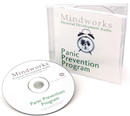
Depression, anxiety, and other emotional problems are issues
that many people struggle with. Often, these problems interfere with
everyday life and general well-being. There are self-care strategies
that you can learn to help you get through your days with a bit more
ease if you find you are struggling with managing your emotions. Even
during bouts of low self-esteem, self-care and emotional management
techniques can help.
_________________________
In this article, I am going to share some of the information that I teach to my clients in counseling sessions, as well as to those in self-care workshops. Some of the strategies I am including here are those I use to end sessions with clients, so that things are not left open and my clients can get home safely, go back to work, or accomplish whatever it is that they need to do that day. If you have any questions about something I have included here, please do not hesitate to contact me via the contact information at the end of this article.
Good grounding strategies are very helpful for better daily living. By "grounding strategies," I mean tools used that can be used to help calm yourself during an emotionally upsetting time. Now don’t get me wrong, I believe it is important to process and feel your emotions at times, as this is the body’s way of healing emotional upset in order to be able to eventually move past it. However, there will be times when it is not appropriate to express upsetting or disturbing emotions, and it is then useful to know how to set the emotion aside and come back to it later at a more appropriate time.
Fundamentally, the following strategies are about you being in control of your emotions instead of your emotions being in control of you. It can be helpful to know that our bodies have processes already integrated into our nervous systems to take care of negative emotions. Strong negative emotions have a "life span" of about 45 to 50 minutes. They do not last forever.
Please note that not every technique will work for everyone, and that what works for one person may not work for another. Once you have found the techniques that work for you, it can be helpful to write them down, or type them and print them out, and keep them handy to ensure you'll have access to them when you need them.
STRATEGIES
Become aware of your body. Shifting your focus away from the emotion and back to your body can be very useful. This can be done by tapping your feet back and forth and really feeling how your feet connect with the floor. Another way to shift the focus back to the body is to notice how your body feels on the chair you are sitting in. Notice your back on the back of the chair, your arms on the arm of the chair, your legs, and how your hands are placed.
Breathe. Notice your breath. Long deep breaths in through the nose and out through the mouth if you can. Really feel the breath going into the body. Breath is life-sustaining and supportive - it is a very good thing to connect with during times of emotional upset. Deep, steady breathing can help ground and soothe the body, and shift your focus away from an upsetting emotion.
Become present. Becoming present by being more aware of your immediate physical surroundings can help shift your awareness. This can be done through naming objects you see in the room around you, naming colors that you see, and naming any sounds that you hear.
Try some EMDR. Another strategy I use frequently in my practice is something called EMDR (Eye Movement Desensitization and Reprocessing), which is very simple, but very effective. All you have to do is move your eyes up and down in a vertical line. No need to move your head, just your eyes. Turning your body to face a doorframe or the corner of a room can help. You can also think of a metaphorical door in your mind closing your emotional self and centering the body.
Activate both brain hemispheres. One way to get both sides of your brain working if you are feeling a strong emotion is to activate them both at the same time. This an be done by looking at art, such as a painting or a sculpture, and counting at the same time. You do not need to analyze the art. Just by looking at it, the right side of your brain is accessed. And then, by counting (1,2,3,4,5,6,7,8,9,10 - as far up as you need to go), you will activate the left side of your brain. If you are aware of a strong feeling and do these two things together, the feeling should dissipate.
Get physical. Anger has a lot of energy to it and wants to have a physical way to get out of your system. I strongly believe in the term "walk it off." Going for a walk, a run or to the gym can help. Screaming into or punching pillows can also help. Stress balls are good as well. Find a healthy way to get the energy out. Anger serves a purpose of letting us know that something needs to be different but, just as it can be done with other emotions, anger too can find a positive outlet.
Practice dual awareness. Practicing something referred to as "Dual Awareness" can really help get you through unwanted emotions when nothing else seems to be helping. To use this strategy, it is helpful to keep in mind that the emotion you are feeling is caused from a past experience being triggered in the present. Become aware of these two things at the same time: the emotion being connected to a past experience, and yourself in your present surroundings. Tell yourself, "I can allow myself to know I am okay right now." The feeling will eventually pass - your body will take care of it in its own in time. It will not last forever. Sometimes you might feel as if you just need to hang on. Find something to help you connect with your current surroundings.
Distract yourself. Reading is something that many people do to take their minds off their worries. Cooking can be another good, healthy distraction. By the way, eating healthily and getting some exercise are two of the best things you can do for depression.
Journaling. Journaling, or writing, is very helpful for some people. It helps give clarity to thoughts and allows for some distance from them. Some people find writing very therapeutic, but if it is not the right thing for you, that is okay. Keep in mind, you do not always have to go back and read what you wrote. Sometimes its just nice to have a place to get it out in the moment.
Create some art. Doing some art – which does not have to look like anything - helps get emotion out. This is a similar idea to journaling. What color would anger be? What would it look like? If you are able to do some art and give your thoughts or feelings some creative expression, follow-up with some good self-care like a nice bath, a walk, or a warm drink.
Design a peaceful environment. Design your surroundings so that they reflect calm and relaxation. Your surroundings can greatly affect your mood. Soothing pictures, some spiritual objects, or other calming objects help create an atmosphere of better emotional health.
Talk to a friend. Spend time talking to friends when you can. Be aware of their boundaries so that you do not go too far with pushing limits. It is important to share with people who will be understanding and supportive.
It is important to remember to practice the strategies that work for you, and that repetition is the best way to learn something new. Also, please keep in mind that this is not a comprehensive list. There are many other ways to ground and self-soothe during times of emotional upset.
In closing, I would like to mention that something I try to encourage all of my clients to do (and others in my life, as well), is to always attempt to provide good self-care. Paying attention to what you eat, how much sleep you are getting, limiting the amount of caffeine is in your diet, and getting some exercise will go a long way to helping your body stay well to support you better during times of emotional upset.







